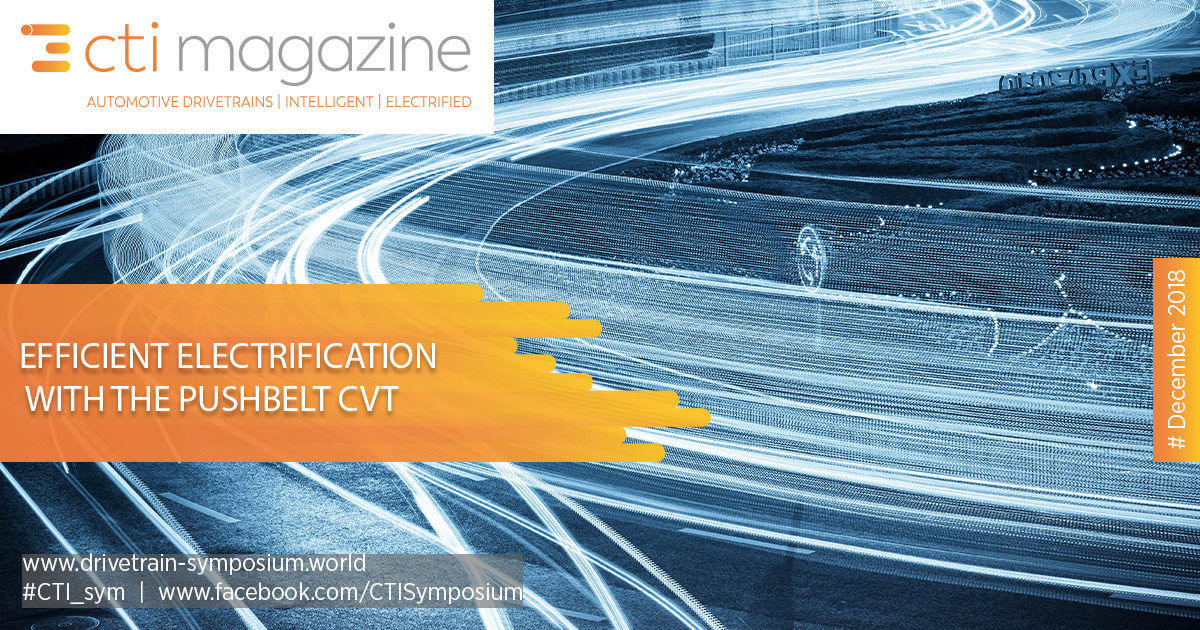
The growing number of hybrid electric (HEV) and electric vehicles (EV) puts pressure on the market for conventional drivelines and introduces challenges but also opportunities for the automotive transmission market. The growing variety of powertrains provide an opportunity for its developers to step into new high-potential business opportunities with suitable driveline options. Hybrid systems including CVT perform best in terms of efficiency, performance and costs The first study that is discussed is a comparative analysis performed on a variety of powertrain topologies, with and without a pushbelt CVT, which reveals that two hybrid systems including a CVT perform best on KPI’s efficiency, accelerator performance and costs. Simulations of powertrain topologies A crucial element that determines functional possibilities, performance, energy efficiency and packaging of a hybrid system is the location of the electric machine (e-machine). Besides P2 and P3 systems, this study also incorporated a concept that is able to switch between P2 and P3 mode, and a power split concept with a structure known from the Toyota Prius
Making use of the available asset CVT in new solutions can help powertrain developers to succeed. This statement is supported by several studies presenting dedicated pushbelt CVT concepts for PHEV and EV, which will be discussed in this article. First, several topologies that integrate the variator in a hybrid driveline are discussed. The Key Performance Indicators (KPI’s) energy efficiency, system cost and performance of these simulated topologies are compared to existing hybrid topologies, showing definite benefits when using a down-sized pushbelt variator. This conclusion is supported by the results of a study that evaluates the potential of a CVT in electric vehicles through a holistic drivetrain approach. The outcome may be surprising to many, as it shows that a pushbelt variator is a valuable addition to an electric driveline in multiple ways.
Click here to read the whole article